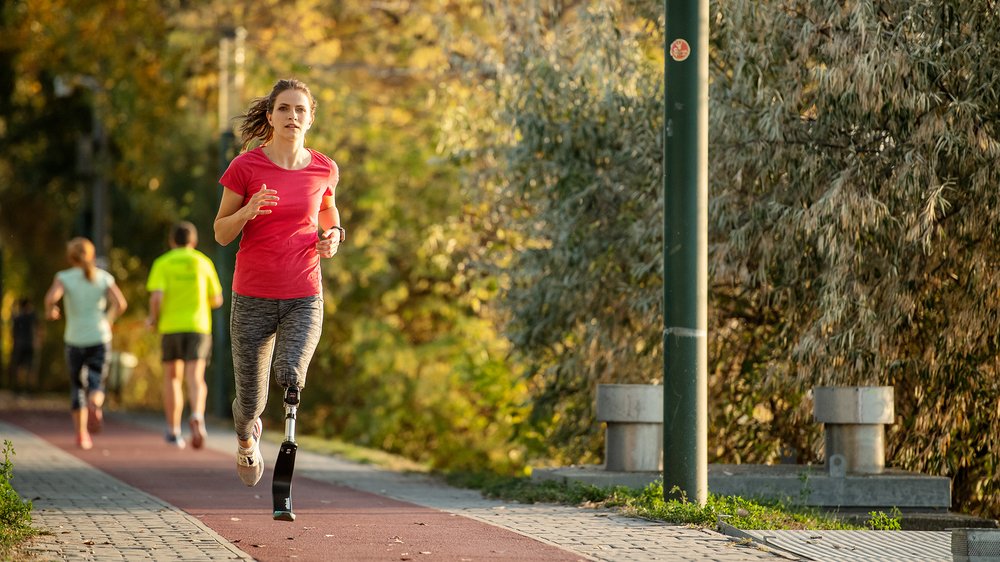Running with blades – piece of cake?
It’s not surprising that you can run with blades since, after all, they’re like a spring that propels you forward! Anyone who’s seen blade babe Marlou van Rhijn in action may think it’s a piece of cake. But we’re here to tell you that it’s anything but.
Imagine having stilts with springs mounted under your shoes. You are then asked to go for a short run. It’s not as easy as it looks! First of all, you have to refind your balance. Running also requires quite a bit of strength, balance and muscle control.
And running on a blade also creates a considerable force on the runner’s residual limb. This can lead to muscle and other pain, as well as blisters, especially in the beginning. As with every other sport, running on blades requires training and more training!

Blades: Just do it
Fortunately, there’s good news! With enough training and perseverance, lots of people can learn to run on blades. This is possible with both a lower leg amputation and a thigh amputation and with both a single and double amputation. Are you and your residual limb in good physical shape (and form)? Then running on blades may very well be right for you. Talk to your O&P professional to get his or her advice.
Want to work on your health? Start today with the free app Fitness for Amputees.
Powerhouse
A beginner cannot even come close to using the blades of top athletes like Marlou van Rhijn. That’s because her running blades are extremely rigid. This means that Marlou needs to exert considerable force on her running blades before they bounce, propelling her forward. For a beginner, it’s virtually impossible to exert that much force on the blades. That is why most people start with a flexible blade that bends more easily.
Running with Ottobock blades
Ottobock has been supporting the Paralympic sports for over thirty years, both as a partner of the Paralympics and other major sporting events and, of course, as a manufacturer of running blades. Ottobock blades are not only suitable for top athletes, but also for recreational ones.
Reimbursement of sports prostheses
Fortunately, the government is also starting to understand the importance of sports for people with a disability. So, we hope that it will be easier in the future to be eligible for a reimbursement of your sports prostheses. The future looks bright! The Dutch National Sports Agreement 2018 (Nationaal Sportakkoord 2018), for example, states that blades should be eligible for reimbursement by municipalities. We’ll keep you up to date on the latest developments!
Not interested in running, but in other types of sports after your amputation? We’re happy to inspire you. Read our article on playing sports after an amputation and who knows, you may soon once again be holding a volleyball or basketball in your hands, or working up a sweat cycling, swimming, working out or playing tennis!